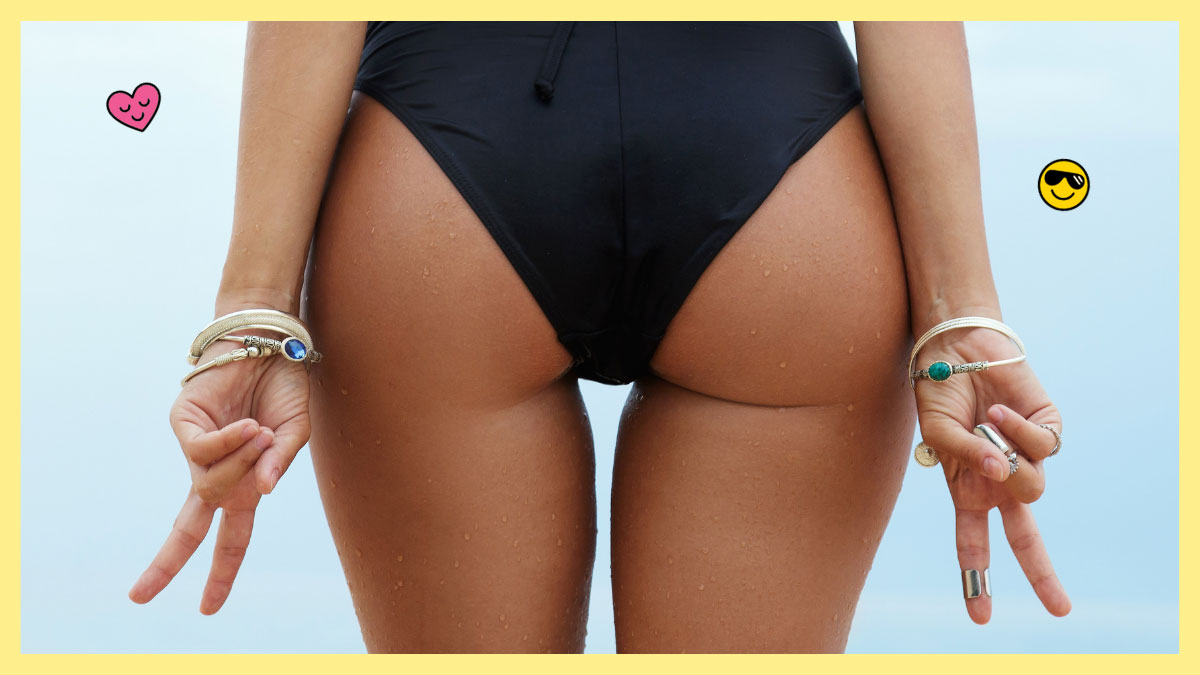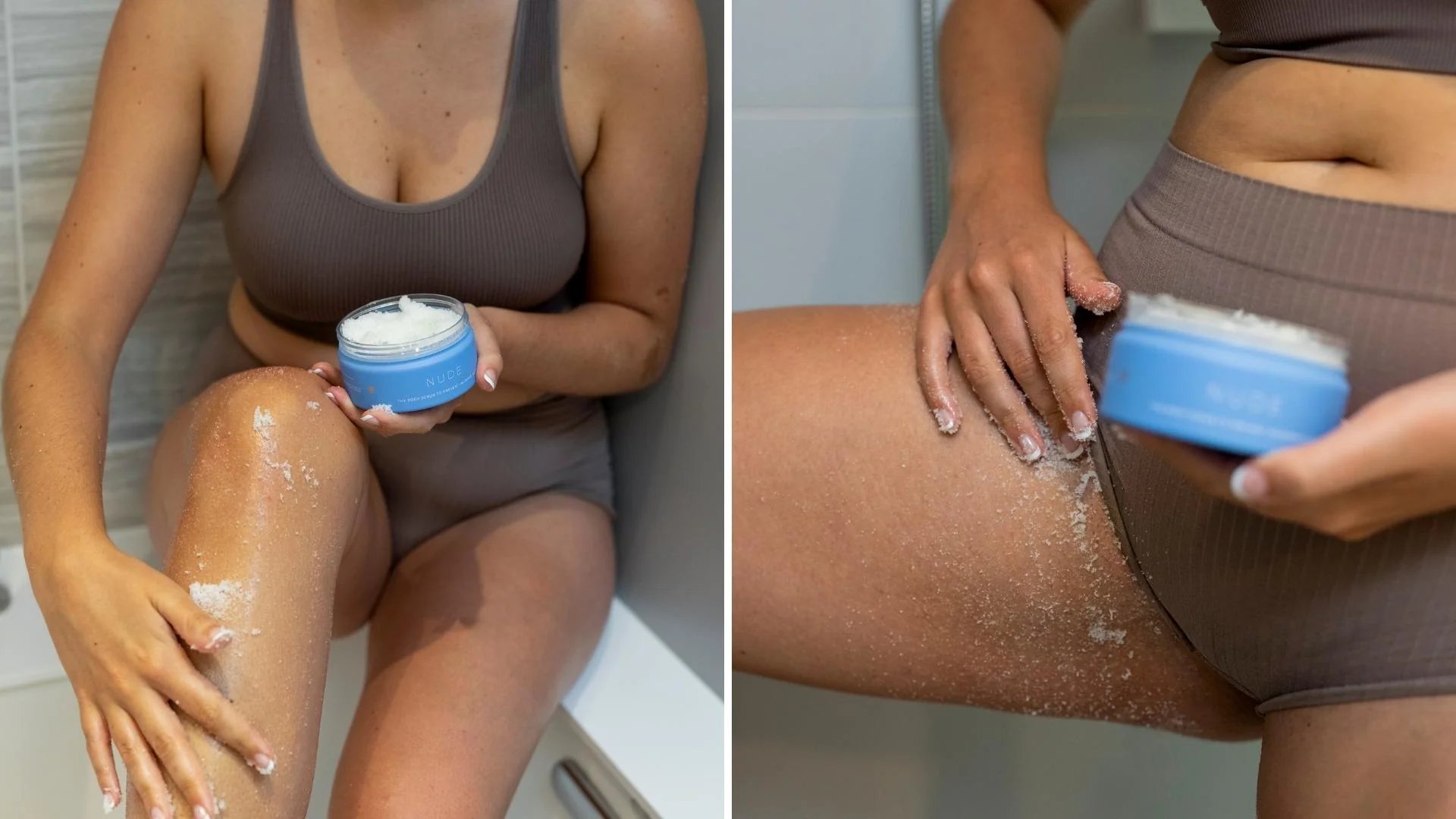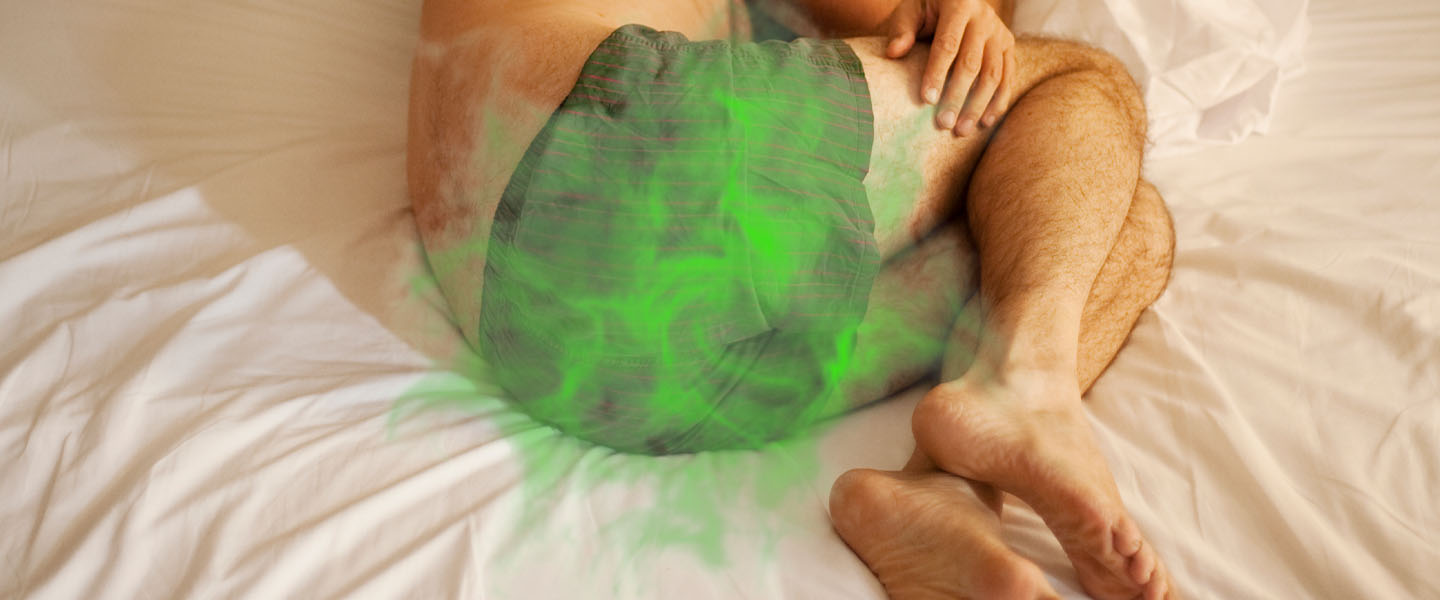Home>Women's Underwear>Bikinis>Why Is My Bikini Area So Dry


Bikinis
Why Is My Bikini Area So Dry
Modified: August 2, 2023
Discover the reasons behind dryness in your bikini area and learn how to keep it moisturized. Explore effective solutions and tips to maintain healthy, hydrated skin with our expert advice on bikinis.
(Many of the links in this article redirect to a specific reviewed product. Your purchase of these products through affiliate links helps to generate commission for Under-tec.com, at no extra cost. Learn more)
Table of Contents
- Introduction
- Factors contributing to dryness in the bikini area
- Lack of hydration
- Harsh soaps and cleansers
- Shaving or waxing
- Hormonal imbalances
- Skin conditions
- Tips for treating and preventing dryness in the bikini area
- Hydrating and moisturizing products
- Gentle cleansing techniques
- Proper shaving and waxing practices
- Balancing hormones
- Seeking medical advice for skin conditions
- Conclusion
Introduction
Having a dry bikini area can be uncomfortable and frustrating. The sensitive skin in this area requires proper care to maintain its health and hydration. There are several factors that contribute to dryness in the bikini area, including lack of hydration, use of harsh soaps and cleansers, shaving or waxing, hormonal imbalances, and skin conditions. Understanding these factors and taking preventive measures can help alleviate dryness and keep your bikini area hydrated and healthy.
One of the key reasons why the bikini area may become dry is the lack of hydration. Just like any other part of your body, the skin in the bikini area needs moisture to stay soft and supple. Dehydration can lead to dryness and irritation, making it essential to drink enough water throughout the day to keep your body and skin hydrated.
Another common culprit is the use of harsh soaps and cleansers. These products often contain chemicals that strip the skin of its natural oils, leaving it dry and prone to irritation. It is important to choose gentle, pH-balanced cleansers specifically formulated for sensitive areas, to avoid further drying out the skin.
The methods used to remove hair from the bikini area, such as shaving or waxing, can also contribute to dryness. Shaving can cause irritation and micro-trauma to the skin, leading to dryness and itchiness. Waxing, on the other hand, removes not only the hair but also a layer of the skin’s natural oils, causing dryness. It is crucial to adopt proper shaving and waxing techniques and follow up with moisturizing to minimize dryness.
Hormonal imbalances can also play a role in the dryness of the bikini area. Hormonal changes during the menstrual cycle or menopause can affect the skin’s moisture levels, making the bikini area more prone to dryness. Balancing hormones through adequate nutrition, regular exercise, and, if necessary, hormonal therapy can help alleviate dryness.
In some cases, dryness in the bikini area may be a symptom of an underlying skin condition. Conditions like eczema, psoriasis, or dermatitis can cause dry, itchy skin in the bikini area. Seeking medical advice and treatment from a dermatologist can help address the root cause of the dryness and provide appropriate management.
In the following sections, we will discuss some tips and strategies to help treat and prevent dryness in the bikini area. By following these guidelines and making a few adjustments to your skincare routine, you can restore moisture and maintain a healthy, well-hydrated bikini area.
Factors contributing to dryness in the bikini area
There are several factors that can contribute to dryness in the bikini area. Understanding these factors is essential in order to effectively treat and prevent dryness in this sensitive area.
One common factor is the lack of hydration. The skin in the bikini area, like any other part of the body, needs to stay hydrated to maintain its moisture levels. Dehydration can lead to dryness, making it important to drink plenty of water throughout the day. Additionally, using moisturizers specifically formulated for the bikini area can provide an extra boost of hydration.
Another factor that can contribute to dryness is the use of harsh soaps and cleansers. Many conventional soaps and cleansers contain chemicals and fragrances that can strip the skin of its natural oils, leaving it dry and irritated. Choosing gentle, pH-balanced cleansers that are specifically designed for sensitive areas can help prevent dryness and maintain the skin’s natural moisture barrier.
Shaving or waxing the bikini area can also lead to dryness and irritation. Shaving can cause friction and remove the natural oils from the skin, leading to dryness and itchiness. Waxing, on the other hand, can remove not only the hair but also a layer of the skin’s protective barrier, causing dryness and sensitivity. It is important to use a sharp, clean razor and moisturize the skin after shaving. When waxing, opting for a professional treatment or using soothing post-wax products can help minimize dryness.
Hormonal imbalances can also contribute to dryness in the bikini area. Changes in hormone levels during the menstrual cycle or menopause can affect the skin’s moisture balance, leading to dryness and discomfort. Adopting a healthy lifestyle, including a balanced diet and regular exercise, can help regulate hormones and improve the overall health of the skin.
Skin conditions such as eczema, psoriasis, or dermatitis can also cause dryness in the bikini area. These conditions can result in redness, inflammation, and flaky skin. Consulting a dermatologist for a proper diagnosis and treatment plan is crucial for managing these skin conditions and alleviating dryness.
To effectively treat and prevent dryness in the bikini area, it is important to address these contributing factors. By staying hydrated, using gentle cleansers, practicing proper shaving or waxing techniques, balancing hormones, and seeking medical advice for skin conditions, you can maintain a well-hydrated and healthy bikini area.
Lack of hydration
A lack of hydration is one of the main culprits for dryness in the bikini area. Just like any other part of the body, the skin in the bikini area requires proper hydration to stay soft, supple, and healthy.
When the body is dehydrated and lacks sufficient water intake, the skin can become dry, rough, and prone to irritation. This can lead to discomfort and itching in the bikini area. It is important to ensure that you are drinking an adequate amount of water throughout the day to keep your body and skin hydrated.
While drinking enough water is important for overall hydration, you can also take additional steps to specifically target the bikini area. Using moisturizers and hydrating products specifically formulated for the bikini area can provide an extra boost of hydration.
Look for moisturizers that contain ingredients like hyaluronic acid, which helps to attract and retain moisture in the skin. Aloe vera gel is another soothing and hydrating ingredient that can help alleviate dryness and promote healing in the bikini area.
When applying moisturizers to the bikini area, make sure to do so after showering or bathing. This helps to lock in moisture while the skin is still slightly damp. Gently massage the moisturizer into the skin until it is fully absorbed.
In addition to staying hydrated and using moisturizers, wearing breathable and moisture-wicking fabrics can also help maintain hydration in the bikini area. Opt for cotton underwear or moisture-wicking fabric blends to prevent moisture from being trapped against the skin, which can lead to dryness.
Lastly, avoid prolonged exposure to harsh chemicals, such as chlorine from swimming pools or hot tubs, as they can further dehydrate the skin. After swimming, rinse the bikini area with fresh water and apply moisturizer to restore moisture and prevent dryness.
By staying properly hydrated, using moisturizers formulated for the bikini area, and taking steps to prevent dehydration, you can help combat dryness and keep your bikini area well-hydrated and healthy.
Harsh soaps and cleansers
The use of harsh soaps and cleansers is a common factor that can contribute to dryness in the bikini area. Many conventional soaps and cleansers contain chemicals, fragrances, and harsh ingredients that can strip the skin of its natural oils, leading to dryness and irritation.
When cleansing the bikini area, it is important to choose gentle, pH-balanced cleansers specifically formulated for sensitive areas. Look for products that are free from sulfates, parabens, and artificial fragrances. These harsh ingredients can disrupt the skin’s natural moisture barrier and cause dryness.
Opting for mild, non-irritating cleansers helps to cleanse the bikini area without stripping away the skin’s natural oils. Look for cleansers that contain soothing ingredients like chamomile, lavender, or calendula, which can help calm and hydrate the skin.
When cleansing the bikini area, use lukewarm water instead of hot water, as hot water can strip the skin of its natural oils. Gently lather the cleanser in your hands and apply it to the bikini area with gentle, circular motions. Avoid scrubbing or rubbing too vigorously, as this can further irritate the skin and contribute to dryness.
After cleansing, make sure to rinse the bikini area thoroughly to remove any residue from the cleanser. Leaving residue on the skin can cause dryness and irritation. Pat the area dry with a soft towel, instead of rubbing, to avoid further irritation.
It is also important to avoid using exfoliating scrubs or loofahs on the bikini area, as this can worsen dryness and cause micro-tears in the skin. If you want to exfoliate the area, opt for gentle exfoliating products specifically designed for sensitive skin and use them sparingly.
In addition to choosing the right cleanser, it is important to wash the bikini area only as often as necessary. Overwashing can disrupt the skin’s natural moisture balance and lead to dryness. Aim to cleanse the area once or twice a day, or as needed, to maintain cleanliness without causing dryness.
By using gentle, pH-balanced cleansers and adopting proper cleansing techniques, you can help prevent dryness caused by harsh soaps and cleansers. Maintaining a healthy moisture balance in the bikini area is essential for keeping the skin hydrated and avoiding discomfort.
Shaving or waxing
Shaving or waxing the bikini area is a common practice, but it can contribute to dryness and irritation if not done correctly. Understanding proper shaving or waxing techniques is important to minimize dryness and maintain the health of the skin in the bikini area.
When shaving the bikini area, it is essential to use a sharp, clean razor to prevent irritation and nicks. Dull razors can tug at the skin, leading to dryness and discomfort. It is also important to shave in the direction of hair growth to minimize irritation. Shaving against the grain can cause more friction and increase the likelihood of dryness and ingrown hairs.
Prior to shaving, it is beneficial to soften the hair and skin by taking a warm bath or shower. This helps to hydrate the hair follicles and make shaving easier and more comfortable. Avoid using hot water, as it can strip the skin of its natural oils and exacerbate dryness.
Using a lubricating gel or foam specifically designed for the bikini area can also help minimize dryness during shaving. These products provide a protective barrier between the razor and the skin, reducing friction and preventing irritation.
After shaving, rinse the bikini area with cool water to soothe the skin and close the pores. Gently pat the area dry with a soft towel and avoid rubbing, as it can cause further irritation and contribute to dryness. Applying a hydrating and soothing lotion or oil to the bikini area can provide immediate relief and help maintain moisture levels.
If waxing is your preferred method of hair removal, it is important to select a professional salon or use high-quality, gentle waxing products. Improper waxing techniques or using low-quality waxes can cause excessive dryness, redness, and even skin burns.
After waxing, apply a post-wax treatment or soothing product specifically formulated for sensitive areas to alleviate dryness and irritation. These products often contain ingredients like aloe vera or chamomile, which help to calm and hydrate the skin.
It is recommended to avoid exposing the freshly waxed or shaved bikini area to hot water, chlorine, or other harsh chemicals for at least 24 hours. These substances can further dry out the skin and cause irritation. Instead, opt for lukewarm water and gentle cleansing during this time.
By adopting proper shaving or waxing techniques, using the right products, and following up with soothing and hydrating treatments, you can minimize dryness and keep your bikini area healthy and comfortable.
Hormonal imbalances
Hormonal imbalances can contribute to dryness in the bikini area. Fluctuations in hormone levels during different stages of a woman’s life, such as during the menstrual cycle or menopause, can affect the skin’s moisture balance and lead to dryness and discomfort.
During the menstrual cycle, levels of estrogen and progesterone fluctuate, which can impact the skin’s hydration levels. Some women may experience dryness in the bikini area before or during their period as a result. Maintaining a healthy lifestyle that includes a balanced diet, regular exercise, and stress management can help regulate hormone levels and improve the overall health of the skin.
During menopause, the body undergoes significant hormonal changes. The decline in estrogen levels can result in a decrease in the production of natural oils, leading to dryness in various areas of the body, including the bikini area. Hormone replacement therapy (HRT) or other hormonal treatments may be recommended by a healthcare professional to help alleviate dryness and other symptoms associated with menopause.
It is important to note that hormonal imbalances can also be influenced by factors beyond the normal menstrual cycle or menopause. Conditions such as polycystic ovary syndrome (PCOS) or thyroid disorders can disrupt hormone levels and contribute to dryness in the bikini area. Consulting with a healthcare provider and receiving appropriate treatment can help regulate hormone levels and alleviate dryness caused by these underlying conditions.
Alongside addressing the hormonal imbalance, keeping the bikini area well-hydrated is crucial. Staying adequately hydrated by drinking enough water and using moisturizers specifically formulated for the bikini area can help minimize dryness and maintain the skin’s moisture balance.
Additionally, wearing breathable underwear made from natural fabrics such as cotton can help promote air circulation and prevent excessive moisture buildup in the bikini area. Avoiding tight or synthetic clothing that can trap heat and moisture can help prevent further dryness and irritation.
In summary, hormonal imbalances, whether due to natural fluctuations during the menstrual cycle or as a result of menopause or underlying conditions, can contribute to dryness in the bikini area. Balancing hormones through various means, such as a healthy lifestyle, HRT, or medical treatment, can help improve the skin’s hydration levels. Additionally, keeping the area well-hydrated and wearing breathable clothing can further alleviate dryness and discomfort.
Skin conditions
Dryness in the bikini area can also be a symptom of underlying skin conditions. Skin conditions such as eczema, psoriasis, or dermatitis can cause dry, itchy, and irritated skin in the bikini area. Understanding these skin conditions and seeking appropriate medical advice can help address the root cause of the dryness and provide effective treatment.
Eczema, also known as atopic dermatitis, is a chronic skin condition characterized by red, itchy, and inflamed patches of skin. The bikini area is susceptible to eczema flare-ups due to its sensitivity and the friction caused by clothing. Keeping the area well-moisturized with gentle, fragrance-free creams or ointments, and avoiding triggers such as harsh soaps or certain fabrics, can help manage eczema-related dryness.
Psoriasis is an autoimmune condition that affects the skin, causing red, scaly patches to develop. While psoriasis typically occurs on the scalp, elbows, and knees, it can also occur in the bikini area. Treatment options for psoriasis may include topical medications, light therapy, or systemic medications, depending on the severity of the condition.
Dermatitis refers to inflammation of the skin, which can be caused by various factors such as irritants, allergens, or underlying conditions. Contact dermatitis can occur if the bikini area comes into contact with irritants such as harsh chemicals or certain fabrics. Avoiding known irritants and using gentle, hypoallergenic products can help manage dermatitis-related dryness.
If you suspect that you have a skin condition contributing to dryness in the bikini area, it is important to seek medical advice from a dermatologist. A dermatologist can properly diagnose the condition and recommend the most appropriate treatment options.
They may prescribe topical medications, such as corticosteroids or moisturizers containing ingredients like ceramides or hyaluronic acid, to reduce inflammation and restore moisture to the skin. In some cases, oral medications or light therapy may be recommended for more severe or persistent cases of skin conditions.
In addition to medical treatment, practicing good skincare habits can help alleviate dryness caused by skin conditions. This includes gentle cleansing with mild cleansers, avoiding hot showers or baths, and consistently moisturizing the skin with products specifically formulated for sensitive or problematic skin.
By addressing the underlying skin condition with medical guidance and following a skincare routine tailored to your specific needs, you can effectively manage dryness in the bikini area and achieve healthier, well-hydrated skin.
Tips for treating and preventing dryness in the bikini area
Dryness in the bikini area can be uncomfortable and irritating, but there are several steps you can take to treat and prevent it. Incorporating these tips into your skincare routine can help keep your bikini area well-hydrated and healthy.
1. Hydrating and moisturizing products: Use moisturizers and hydrating products specifically formulated for the bikini area. Look for ingredients like hyaluronic acid and aloe vera, which help to attract and retain moisture in the skin.
2. Gentle cleansing techniques: Use mild, pH-balanced cleansers specifically designed for sensitive areas. Avoid using harsh soaps and aggressive scrubbing, as this can strip the skin of its natural oils and contribute to dryness.
3. Proper shaving and waxing practices: When shaving, use a sharp, clean razor and shave in the direction of hair growth to minimize irritation. After shaving or waxing, apply a soothing lotion or oil to help moisturize the skin and prevent dryness. Consider professional waxing services to minimize the risk of skin damage.
4. Balancing hormones: If hormonal imbalances are contributing to dryness in the bikini area, consult with a healthcare professional. They may recommend hormonal therapy or lifestyle changes to help balance hormone levels and improve overall skin health.
5. Seeking medical advice for skin conditions: If you suspect that an underlying skin condition is causing the dryness, seek advice from a dermatologist. They can provide an accurate diagnosis and recommend appropriate treatments or medications to address the specific condition.
6. Wearing breathable fabrics: Choose underwear made from natural, breathable fabrics like cotton to allow air circulation and prevent moisture buildup. Avoid wearing tight or synthetic clothing that can trap heat and moisture, as this can contribute to dryness and discomfort.
7. Avoiding harsh chemicals: Minimize exposure to harsh chemicals such as chlorine from swimming pools or hot tubs. Rinse the bikini area with fresh water after swimming and apply moisturizer to restore moisture and prevent dryness.
8. Stay hydrated: Drink plenty of water throughout the day to maintain overall hydration. Proper hydration is essential for keeping the skin in the bikini area moisturized and healthy.
9. Limiting shaving or waxing frequency: Avoid over-shaving or over-waxing the bikini area, as this can lead to increased dryness and irritation. Allow time for the skin to rest and recover between hair removal sessions.
By incorporating these tips into your bikini area care routine, you can effectively treat and prevent dryness, ensuring your skin remains hydrated, healthy, and comfortable.
Hydrating and moisturizing products
Using hydrating and moisturizing products is crucial for maintaining the moisture balance in the bikini area and preventing dryness. There are many specially formulated products available that can provide deep hydration and protect the delicate skin in that area.
Moisturizers: Look for moisturizers specifically designed for the bikini area. These products are often formulated with hydrating ingredients like hyaluronic acid, shea butter, or glycerin. They help to attract and retain moisture in the skin, keeping it hydrated and supple. Apply a generous amount of moisturizer to the bikini area after bathing or showering to lock in moisture.
Aloe vera gel: Aloe vera is renowned for its soothing and hydrating properties. Applying pure aloe vera gel or products containing aloe vera to the bikini area can help relieve dryness, reduce inflammation, and promote healing. It provides a cooling sensation while replenishing moisture to the skin.
Hydrating serums: Hydrating serums are lightweight and easily absorbed by the skin, making them ideal for the bikini area. Look for serums that contain hyaluronic acid, which is known for its ability to hold moisture in the skin. Applying a hydrating serum before moisturizing can provide an extra layer of hydration to combat dryness effectively.
Oils: Natural oils such as jojoba oil, coconut oil, or almond oil can provide deep hydration and nourishment to the bikini area. These oils help to replenish the skin’s natural moisture barrier and prevent moisture loss. Apply a few drops of oil to the bikini area and massage gently to promote absorption.
Sheet masks: Sheet masks are not only for the face; there are also sheet masks designed specifically for the bikini area. These masks are infused with powerful hydrating ingredients that can provide an intense boost of moisture to the skin. Apply the sheet mask to the bikini area according to the instructions, and leave it on for the specified time to allow the skin to absorb the hydrating essence.
Intimate moisturizers: Intimate moisturizers are specially formulated for the sensitive skin in the bikini area. These moisturizers are often free from fragrances and other potential irritants. They are specifically designed to provide long-lasting hydration and comfort to the delicate skin in that area.
When choosing hydrating and moisturizing products, opt for those that are free from harsh chemicals, fragrances, and potential irritants. Look for products specifically labeled for sensitive or intimate areas. Patch test new products on a small area of skin before applying them to the entire bikini area to ensure there are no adverse reactions.
Remember to apply these hydrating and moisturizing products regularly and consistently to maintain the moisture balance in the bikini area. Incorporating these products into your skincare routine will help prevent dryness, keep the skin soft and supple, and promote overall comfort and well-being.
Gentle cleansing techniques
Practicing gentle cleansing techniques is essential for maintaining the health and hydration of the delicate skin in the bikini area. Harsh cleansing methods can strip the skin of its natural oils, leading to dryness and irritation. By adopting gentle cleansing techniques, you can effectively cleanse the area without compromising its moisture balance.
Choose mild, pH-balanced cleansers: Look for cleansers specifically formulated for sensitive and intimate areas. These cleansers are often free from harsh chemicals and fragrances that can strip the skin’s natural oils and cause dryness. Opt for gentle, mild cleansers that are designed to maintain the skin’s pH balance and protect its moisture barrier.
Avoid hot water: When cleansing the bikini area, avoid using hot water. Hot water can be excessively drying to the skin. Instead, opt for lukewarm water, which helps to cleanse the area effectively without stripping away the skin’s natural oils.
Use gentle, circular motions: When applying cleanser to the bikini area, use gentle, circular motions with your fingertips. Avoid rubbing or scrubbing too vigorously, as this can cause irritation and exacerbate dryness. Be gentle and mindful of the delicate nature of the skin in this area.
Rinse thoroughly: After cleansing, make sure to rinse the bikini area thoroughly with lukewarm water. Leaving any residue from the cleanser on the skin can contribute to dryness and irritation. Proper rinsing ensures that the skin is clean and ready for the next step in your skincare routine.
Pat dry with a soft towel: After rinsing, gently pat the bikini area dry with a soft, clean towel. Avoid rubbing the skin, as this can cause friction and further dry out the area. Patting allows you to remove excess water while being gentle on the skin.
Limit cleansing frequency: The bikini area does not require frequent or aggressive cleansing. Overwashing can disrupt the skin’s natural moisture balance and lead to dryness. Aim to cleanse the area once or twice a day, or as needed, to maintain cleanliness without over-drying the skin.
Avoid exfoliating too often: While exfoliating can help remove dead skin cells and promote smoothness, overdoing it can lead to dryness and irritation. Limit exfoliation to once or twice a week and use gentle, non-abrasive exfoliating products specifically formulated for the bikini area.
Wear clean underwear: Clean underwear plays a significant role in maintaining cleanliness and preventing irritation in the bikini area. Change into clean, cotton underwear regularly to ensure good hygiene and to reduce friction and dryness.
By following these gentle cleansing techniques, you can effectively cleanse the bikini area without compromising its moisture balance. Remember to choose mild cleansers, rinse thoroughly, and be gentle with your skin. By doing so, you will prevent dryness, keep the area comfortable, and maintain its overall health and well-being.
Proper shaving and waxing practices
Proper shaving and waxing practices are crucial for minimizing dryness and irritation in the bikini area. Whether you prefer shaving or waxing for hair removal, following these guidelines can help maintain the health and hydration of the skin.
Shaving:
- Start by preparing the skin. Take a warm shower or bath to soften the hair and open the pores. This helps to make shaving easier and less irritating.
- Use a sharp, clean razor to avoid tugging at the skin. Dull blades can cause friction and lead to dryness and irritation.
- Apply a lubricating gel or foam specifically formulated for sensitive areas to create a protective barrier between the razor and the skin. This minimizes friction and prevents dryness.
- Shave in the direction of hair growth to minimize irritation. Shaving against the grain can cause more friction and increase the likelihood of dryness and ingrown hairs.
- Rinse the bikini area with cool water after shaving to soothe the skin and close the pores. Gently pat the area dry with a soft towel, avoiding rubbing to prevent further irritation.
- After shaving, apply a hydrating lotion or oil to moisturize the skin and prevent dryness. Look for products that contain soothing ingredients like aloe vera or chamomile.
- Avoid shaving the same area repeatedly as this can lead to increased dryness and irritation. Allow time for the skin to rest and recover before the next shaving session.
Waxing:
- If you opt for waxing, consider professional services or high-quality waxing products. Improper waxing techniques or using low-quality waxes can cause excessive dryness, redness, and even skin burns.
- Before waxing, make sure that the hair is at least a quarter-inch long for best results. Shorter hair may not adhere well to the wax and may lead to ineffective hair removal and increased dryness.
- Ensure that the skin is clean and free from any oils, lotions, or powders before waxing. This helps the wax to adhere properly and provides a more effective hair removal process.
- After waxing, apply a post-wax treatment or soothing product specifically formulated for sensitive areas to alleviate dryness and irritation. These products often contain ingredients like aloe vera or chamomile, which help to calm and hydrate the skin.
- Avoid exposing the freshly waxed bikini area to hot water, chlorine, or other harsh chemicals for at least 24 hours. These substances can further dry out the skin and cause irritation. Instead, opt for lukewarm water and gentle cleansing during this time.
- Allow sufficient time between waxing sessions to allow the skin to recover. Waxing too frequently can lead to increased dryness and sensitivity.
By following these proper shaving and waxing practices, you can minimize dryness, irritation, and discomfort in the bikini area. Taking care to use sharp razors, lubricating gels, and soothing post-shave or post-wax products will help maintain the skin’s hydration and overall health.
Balancing hormones
Hormonal imbalances can contribute to dryness in the bikini area, particularly during different stages of a woman’s life, such as the menstrual cycle or menopause. Balancing hormones is essential for maintaining the overall health and hydration of the skin in this delicate area.
If hormonal imbalances are causing dryness in the bikini area, there are several strategies you can consider:
1. Healthy lifestyle: Adopting a healthy lifestyle plays a significant role in hormone balance. Engage in regular exercise, eat a balanced diet rich in fruits, vegetables, and whole grains, and manage stress effectively. These lifestyle factors can help regulate hormone production and improve overall skin health.
2. Hydration: Staying properly hydrated is beneficial for balancing hormones. Drink enough water throughout the day to ensure your body is well-hydrated. Proper hydration supports hormone production and aids in maintaining the skin’s moisture balance.
3. Hormone replacement therapy (HRT): For women going through menopause, hormone replacement therapy may be an option to balance hormone levels and alleviate symptoms such as dryness. Consult with a healthcare professional to discuss the potential benefits and risks of HRT and determine if it is suitable for you.
4. Herbal remedies: Some herbal remedies, such as evening primrose oil or black cohosh, have been suggested to help balance hormone levels naturally. However, it is essential to consult with a qualified healthcare practitioner before using any herbal supplements to ensure their safety and effectiveness.
5. Medical treatment: In cases where hormonal imbalances are causing significant dryness or discomfort in the bikini area, a healthcare professional can provide medical treatments to address the underlying hormonal issues. This may include prescribing hormonal medications or therapies to help regulate hormone levels and alleviate symptoms.
6. Hormonal birth control: For some women, hormonal birth control methods, such as oral contraceptives or hormonal IUDs, can help regulate hormone levels and improve dryness in the bikini area. Discuss with your healthcare provider to determine if hormonal birth control is suitable for you and to choose the most appropriate method.
It’s important to note that hormone balance can be influenced by various factors, and individual approaches may vary. Consulting with a healthcare professional or specialist in hormone health can provide tailored guidance and recommendations based on your specific needs and circumstances.
By addressing hormonal imbalances through lifestyle changes, potential medical interventions, and maintaining overall hydration, you can help balance hormones, regulate moisture levels in the bikini area, and improve the overall health of your skin.
Seeking medical advice for skin conditions
If you suspect that an underlying skin condition is contributing to dryness in the bikini area, it is essential to seek medical advice from a dermatologist. Consulting with a healthcare professional who specializes in skin health can help properly diagnose the condition and provide appropriate treatment options.
Skin conditions such as eczema, psoriasis, or dermatitis can cause dryness, itchiness, and inflammation in the bikini area. These conditions may require specific treatment approaches to alleviate symptoms and restore moisture to the skin.
A dermatologist will thoroughly examine the affected area, take into consideration your medical history, and potentially conduct tests to determine the underlying cause of the dryness. They can then provide a diagnosis and recommend an appropriate treatment plan.
Treatment options may include:
Topical medications: Your dermatologist may prescribe topical medications, such as corticosteroids, calcineurin inhibitors, or moisturizers containing specific ingredients. These medications help reduce inflammation, soothe the skin, and restore moisture to the affected area.
Oral medications: In more severe cases, oral medications, such as immunosuppressants or retinoids, may be prescribed to manage symptoms and improve the overall condition of the skin. These medications are typically used for specific skin conditions like psoriasis.
Phototherapy: Phototherapy involves exposing the affected skin to controlled doses of ultraviolet light. This can help reduce inflammation, itchiness, and promote skin healing in certain skin conditions. Your dermatologist will determine if phototherapy is suitable for your specific condition and prescribe the appropriate treatment plan.
Moisturizers and topical treatments: Your dermatologist may recommend specific moisturizers or topical treatments that are effective for treating and preventing dryness in the bikini area. These products often contain key ingredients like ceramides, hyaluronic acid, or urea which can help restore and maintain the skin’s natural moisture barrier.
Moreover, seeking medical advice is especially important if the dryness in the bikini area is accompanied by severe itching, redness, or if it fails to improve with home remedies or over-the-counter treatments. A dermatologist can evaluate your specific symptoms, provide an accurate diagnosis, determine the underlying cause of the dryness, and devise a targeted treatment plan.
It is essential to follow your dermatologist’s recommendations and maintain regular follow-up appointments to monitor the progress of the treatment. With proper medical guidance, you can effectively manage the underlying skin condition, alleviate dryness, and improve the overall health and comfort of your bikini area.
Conclusion
Dealing with dryness in the bikini area can be uncomfortable and frustrating, but with the right knowledge and approach, it can be effectively managed and prevented. Factors such as lack of hydration, harsh soaps and cleansers, shaving or waxing, hormonal imbalances, and underlying skin conditions can contribute to dryness in this sensitive area.
To treat and prevent dryness, it is crucial to prioritize hydration by drinking enough water throughout the day and using moisturizers specifically formulated for the bikini area. Additionally, choosing gentle cleansers, practicing proper shaving and waxing techniques, and balancing hormones through a healthy lifestyle or medical intervention can help alleviate dryness. Seeking medical advice from a dermatologist is important if dryness persists or is accompanied by severe symptoms, as they can accurately diagnose any underlying skin conditions and prescribe appropriate treatments.
Remember to also wear breathable fabrics, maintain good hygiene, and be mindful of any allergens or irritants that may worsen dryness. By incorporating these strategies and tips into your skincare routine, you can keep your bikini area well-hydrated, comfortable, and healthy.
Take care of your bikini area with the same attention and care you would give to any other part of your body. By doing so, you can enjoy optimal comfort, confidence, and well-being all year round.










